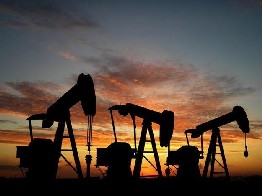

How important is the Keystone Pipeline to the United States?
It truly is a keystone, in the sense that if it were taken away, it would have big impacts on energy not just in the United States but in Canada. Although there will be substitute ways of getting tar sands crude out of Canada, that will be more expensive and so it will make the economics of those projects less compelling.
It will essentially have impacts on refining in the U.S. What’s happened so far is that some of the bottlenecks in the infrastructure in the mid-continent appear to have been alleviated, although not completely. If Keystone doe goes through that will require some some additional knock-on investment in the mid-continent of the United States in order to bring that oil, plus all the stuff that’s being produced in the Bakken (in North Dakota), to the main refining areas.
What about U.S. oil self-sufficiency. How recoverable are shale oil and gas deposits?
That’s the $64,000 question. I really don’t know the answer. One of the imponderables about it is the depletion rates and drilling on these wells and there is some considerable controversy about that. But one thing we know is that the technology is evolving more quickly and more cheaply so they can find more oil that they haven’t been able to reach economically before. Given the track record recently, I would bet on the technology maybe not making the U.S. self-sufficient but certainly seeing substantial production increases over and above what we are seeing now.
Does the renewal of cheap fossil fuels in the U.S. have an impact on “clean” energy companies?
It definitely has an impact on the natural gas side. It undermines the economics of wind and also solar; it also undermines the economics of dirtier sources of fuel, like coal.
So that means we’re a long way off from seeing a self-sustaining alternative energy industry?
Even without the subsidies, that makes it an even longer way off and these industries have not proven that they can stand on their own two feet financially. So I think that cheap gas makes it all that more difficult.
With fossil-fuel self sufficiency, what sort of outlook does that offer oil refiners?
It’ a boon to refiners, especially those located close to the resource. But it is also a boon for refiners generally, including those on the east coast, which had been withering as a refining area but now have the ability to get oil from Bakken at prices that are competitive or undercut Brent.
What role does China play in all this?
China is very important on the demand side. Demand growth, in part that’s driven by their economic model, which is very resource-intensive. Now it’s being recognized – or they are at least paying lip-service to – the question of what will happen if there is a transition to a less resource-intensive, less export-oriented, less investment-driven economic policy. But they don’t seem to be able to make that transition. Any time the economy seems to stutter a little bit, I don’t know if panic is the word, but they essentially go back to support for the export industries and as long as that continues China will continue to be the major source of growth in the [global economy]. But I don’t think that that model is sustainable forever. Eventually they have to either voluntarily make the transition or the choice is going to be made for them in a rather difficult transition. So some time in the middle to longer term you’ll see China becoming less dominant in the energy market.
Are there no new energy sources for China to tap, say in Russia?
There are sources in Russia. The resources are there. They talk a good game. But now that their mature fields are starting to decline rather precipitously, there’s the question of how those are going to be replaced. There are far more technical challenges either in the Arctic or with shale sources and again it’s not certain how Russia is going to make that transition.
And your forecast?
Predicting trends in the energy industry is a always a very dangerous thing to do because trends have the ability to reverse themselves quite quickly. But the trends we’re seeing now are very different from what were being forecast eight or 10 years ago.
